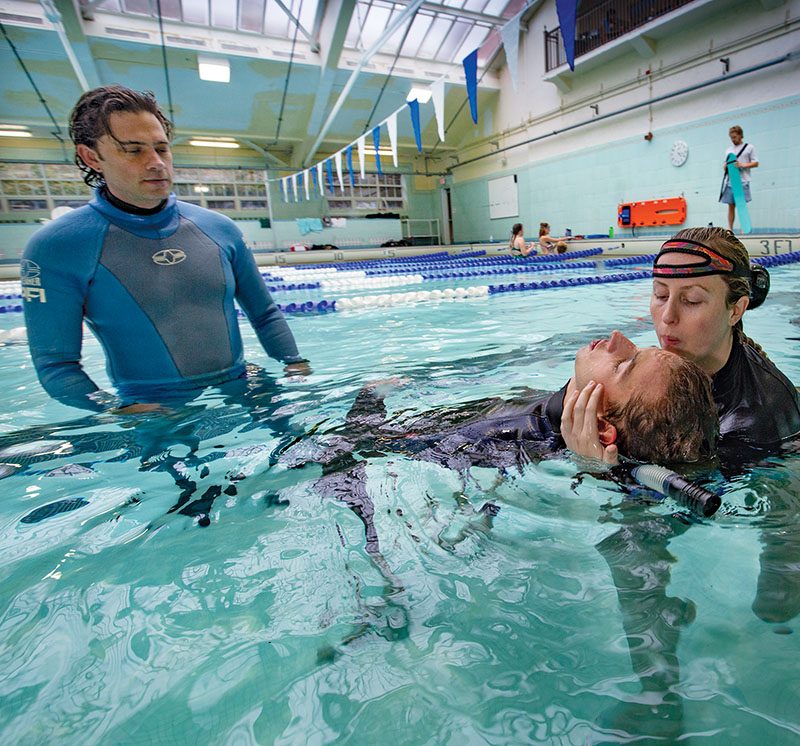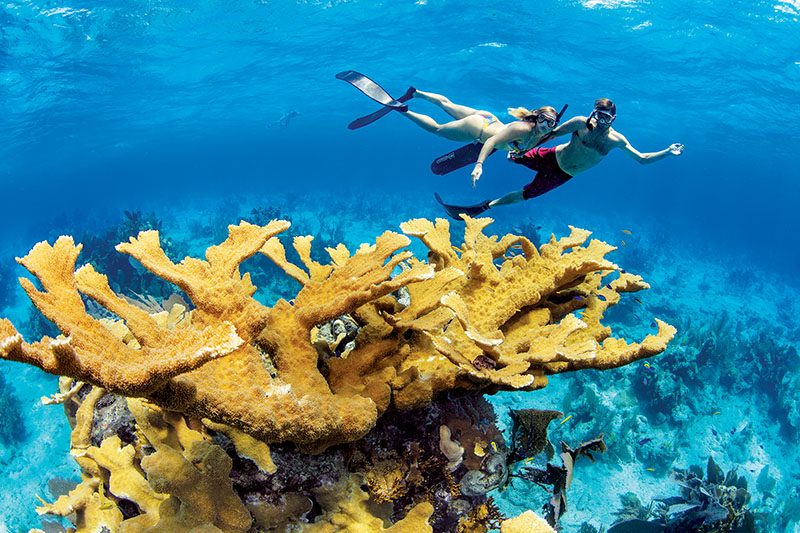L'intérêt pour la plongée en apnée s'est accru de manière exponentielle au cours de la dernière décennie. La plupart des amateurs de sports nautiques ont déjà retenu leur souffle sous l'eau à un moment ou à un autre, mais la plupart d'entre eux le font sans formation formelle ou sans être conscients des dangers connus, malgré la disponibilité de ces informations qui peuvent sauver des vies. Cependant, lorsqu'elle est pratiquée en toute sécurité, la plongée en apnée peut être une expérience exaltante.
With the rise in freediving’s popularity across many different water sports comes large numbers of beginners who are seeking formal training. Such training offers attainable physical and mental goals with many benefits for mental and physical health and enhanced self-esteem. It also requires strict adherence to safeguards. Disregarding safety measures can bring serious risks to your lungs and brain and even result in death. Understanding the known risks and taking action to mitigate them are central to successfully enjoying any activity, and freediving is no exception.
Une formation formelle dispensée par un instructeur d'apnée certifié, que divers organismes de formation proposent, permet d'acquérir les bases de la sécurité en apnée. Le moniteur insistera sur de nombreux concepts vitaux au cours de votre formation. Deux des principes les plus importants et les plus souvent répétés sont de ne jamais plonger seul en apnée et d'éviter l'hyperventilation avant la plongée.
Once certified, you’ll know how to incorporate strict safety standards into every dive, no matter how trivial they may seem. The dive briefing, which should happen before every breath-hold dive, will include analyzing risks, addressing specific concerns regarding the planned dives, and reviewing breath control, rescue techniques, and resuscitation.
Breath control is a critical point that some freedivers overlook, but it directly affects your body’s oxygen and carbon dioxide levels. Breathing is an autonomic function of the human body and can reflect internal changes in the body’s state.
Carbon dioxide is a powerful stimulant for breathing — our urge to breathe increases when we have excess carbon dioxide. Exercise or breath-holding can increase carbon dioxide and decrease oxygen levels. Lower oxygen levels (hypoxia) provide a much weaker stimulus to breathe but may be the only stimulus if we have lower carbon dioxide levels in our blood. When we hyperventilate, we lower our carbon dioxide levels and remove the powerful, carbon-dioxide-induced urge to breathe.


How do you know when to come up during a breath-hold dive? The urge to breathe is your preservation mechanism, so carbon dioxide serves as a life-preserving stimulant. Without the urge to breathe, a freediver will not know when to come up for air, even if they become dangerously hypoxic. In addition, your awareness will be compromised once hypoxia sets in, and you can become unconscious while underwater, which may result in drowning if your buddy and the safety team don’t effectively rescue you.
Oxygen in blood is mainly bound to hemoglobin for transportation, while carbon dioxide is mostly dissolved. When carbon dioxide levels drop, the blood’s chemical properties change. Blood pH rises, which strengthens the bond between hemoglobin and oxygen, resulting in oxygen not being adequately released into vital tissues, particularly the brain. When the brain doesn’t have enough oxygen to sustain normal function, it will attempt to preserve the primary functions — breathing and heartbeat — while ceasing others, such as consciousness, thought, and motor control.
En gardant ces informations à l'esprit, les apnéistes doivent reconnaître que la conscience de leur respiration est cruciale pour leur sécurité. Nous naissons génétiquement codés avec des mécanismes évolutifs résiduels pour survivre sous l'eau pendant un temps limité. L'apnée est la pratique qui consiste à débloquer ces mécanismes en toute sécurité, de manière scientifique et holistique.
Il existe de nombreux schémas respiratoires, dont les deux éléments les plus importants sont le volume courant et l'hyperventilation. Pour expliquer le volume courant, prenons ces deux exemples : Imaginez votre respiration lorsque vous vous endormez en regardant la télévision au lit ou une respiration qui ferait à peine vaciller une flamme près de vos lèvres.
Explaining hyperventilation is not as simple. The concise definition is any manipulation of your breathing that drops your carbon dioxide levels. Carbon dioxide is our safety net, so we put ourselves at risk if we eliminate too much of it. Any pattern of breathing that decreases our body’s natural balance of carbon dioxide is considered hyperventilation. Long exhalations, exhaling more volume, and rapid breathing all lower carbon dioxide levels.
La façon idéale de respirer avant une plongée en apnée est de maintenir le volume courant jusqu'à la dernière inspiration. Respirer normalement peut être plus facile à dire qu'à faire. L'hyperventilation peut se produire par inadvertance ; vous devez la corriger avant de tenter une plongée en apnée.
Il est important de suivre une formation adéquate et de prévoir un intervalle de surface suffisant pour la récupération entre les plongées afin d'optimiser la technique de respiration. Le respect de votre formation et des directives fournies augmentera votre sécurité et votre plaisir à pratiquer cette activité.
En résumé, n'hyperventilez pas et ayez toujours un compagnon de plongée compétent qui vous surveille de près pendant toute la durée de la plongée en piscine ou en apnée en eau libre, quelle que soit la profondeur.
© Alert Diver - Q1 2023